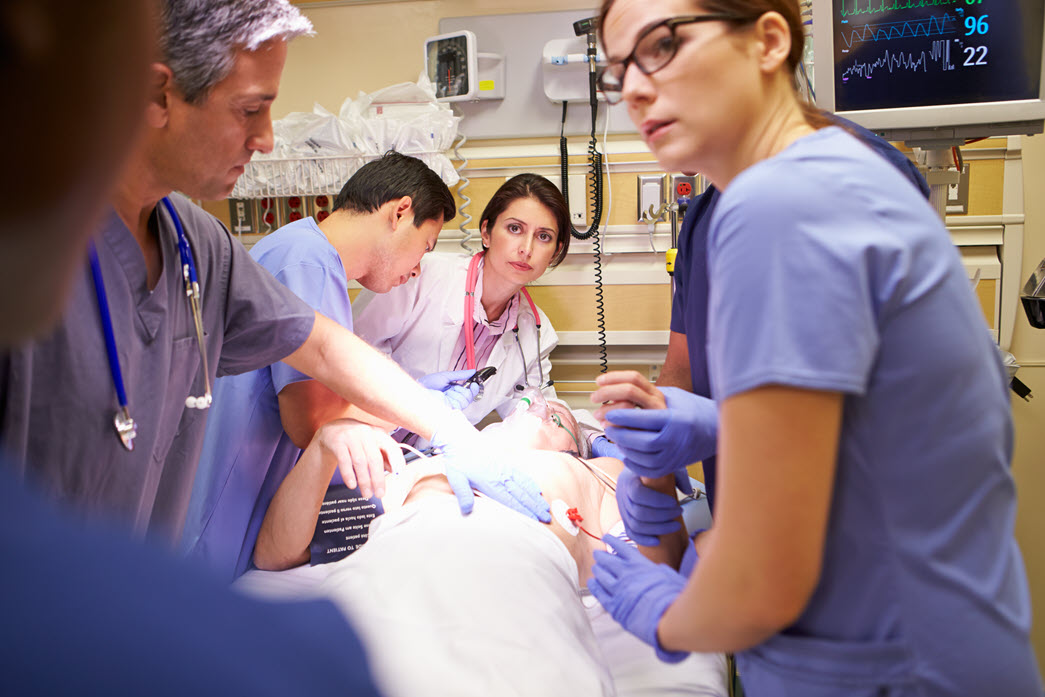Share:
What to do if this crisis happens to your patient

Malignant hyperthermia is a well-known condition among perioperative and anesthesia teams, but is less known among other clinical teams, particularly providers, nurses, CNAs and RTs who work in ED, critical care, PACU, procedural and post-surgical areas.
MH is a true emergency, so it is critical that clinicians are aware of the signs and symptoms to quickly identify and respond to the condition.
Malignant hyperthermia is a hypermetabolic crisis which can occur in susceptible patients exposed to succinylcholine or volatile (e.g. isoflurane, sevoflurane, desflurane) anesthetics.
MH results from abnormal accumulation of calcium in the myoplasm. During a MH episode, clinical signs and symptoms are caused by an overload of calcium within the skeletal muscles, which leads to sustained muscular contraction and the results of muscle breakdown, cellular hypermetabolism, anaerobic metabolism and acidosis.
Signs and symptoms to watch out for may include dangerously high body temperature, rigid muscles or muscle spasm, rapid heart rate, low blood pressure, high potassium levels, brown or cola-colored urine, and increased end tidal carbon dioxide, to name a few. If left untreated, this condition can lead to death.
Patients at risk for malignant hyperthermia have a personal or family history of the condition or have had reactions to anesthesia or succinylcholine (often used in procedures such as rapid sequence intubation).
Identification and acute phase treatment
Review the malignant hyperthermia policy and procedures![]() for full response details.
for full response details.
- Identify patients who are at risk and know what medications put patients at risk.
- If signs and symptoms of MH occur, call for help and obtain an MH cart (locations are identified in the policy, but are generally available in perioperative or procedural settings).
- Dial 777 in-house.
- Call the MH hotline, (800) 644-9737.
- Notify pharmacy.
- Discontinue volatile agent (anesthesia, succinylcholine).
- Administer initial and ongoing dantrolene per orders. Dantrolene should be available within 10 minutes of suspected MH crisis.
- Hyperventilate with 100% oxygen.
- Cool the patient per policy or order.
- Ensure labs are drawn; maintain appropriate vital sign monitoring.
- Monitor for electrolyte disturbances, dysrhythmias and hemodynamic instability.
What you can do
- Be aware of the signs and symptoms of MH.
- Understand if the patients in your general care area are at higher risk of MH (e.g., OR, PACU, Procedural, Critical Care, Post-Surgical).
- Know how to call for help and where your resources are.
- Supplies to treat MH (MH cart plus dantrolene) must be readily available wherever general anesthetic triggering agents (volatile gases and succinylcholine) are used.
- Understand initial response steps and monitoring parameters.
If you have questions regarding the MH response in your area, please reach out to ed**************@as****.org for additional information or resources.
Resources![]()
If you have a question, please contact the author or relevant department directly.



